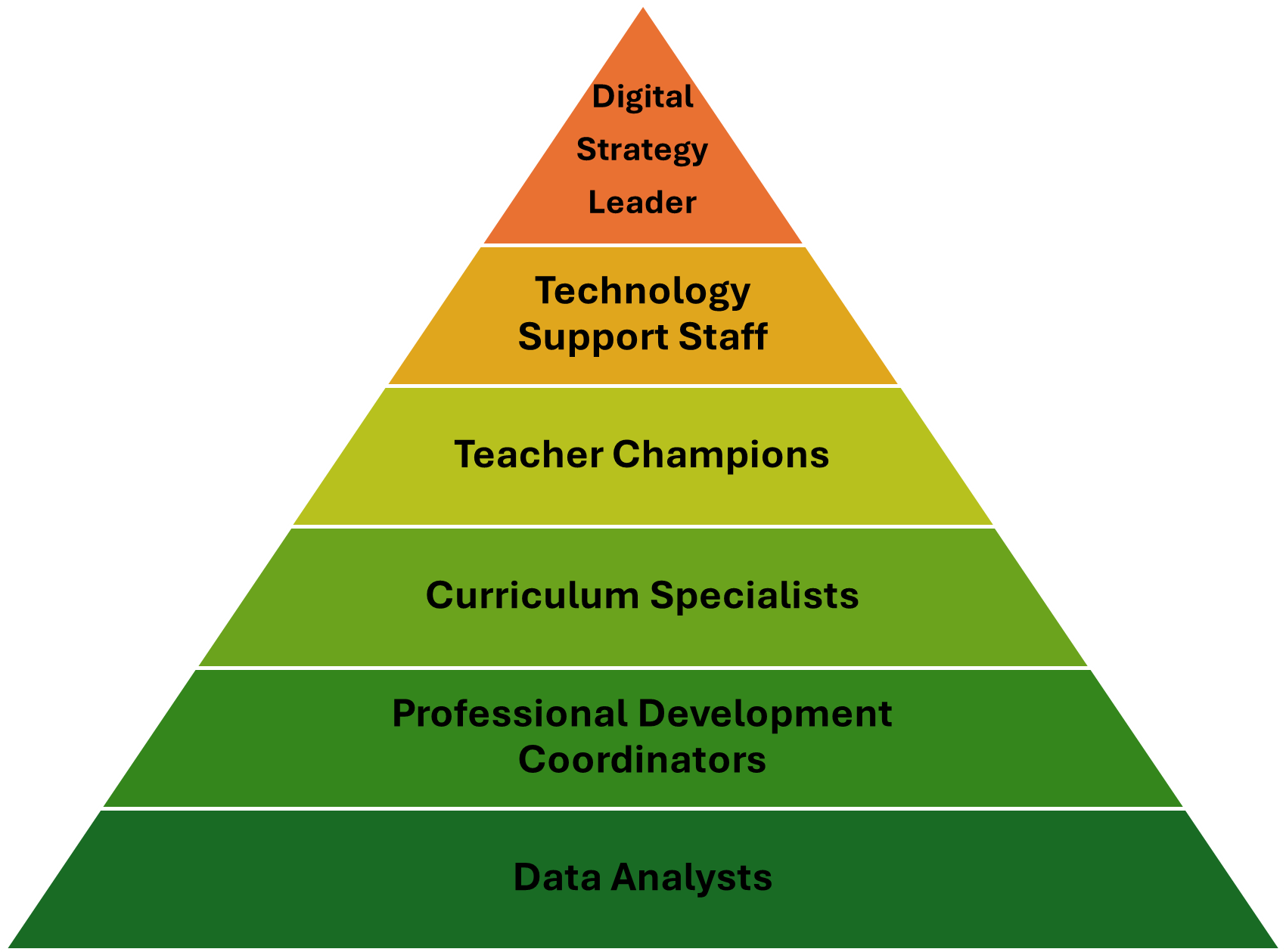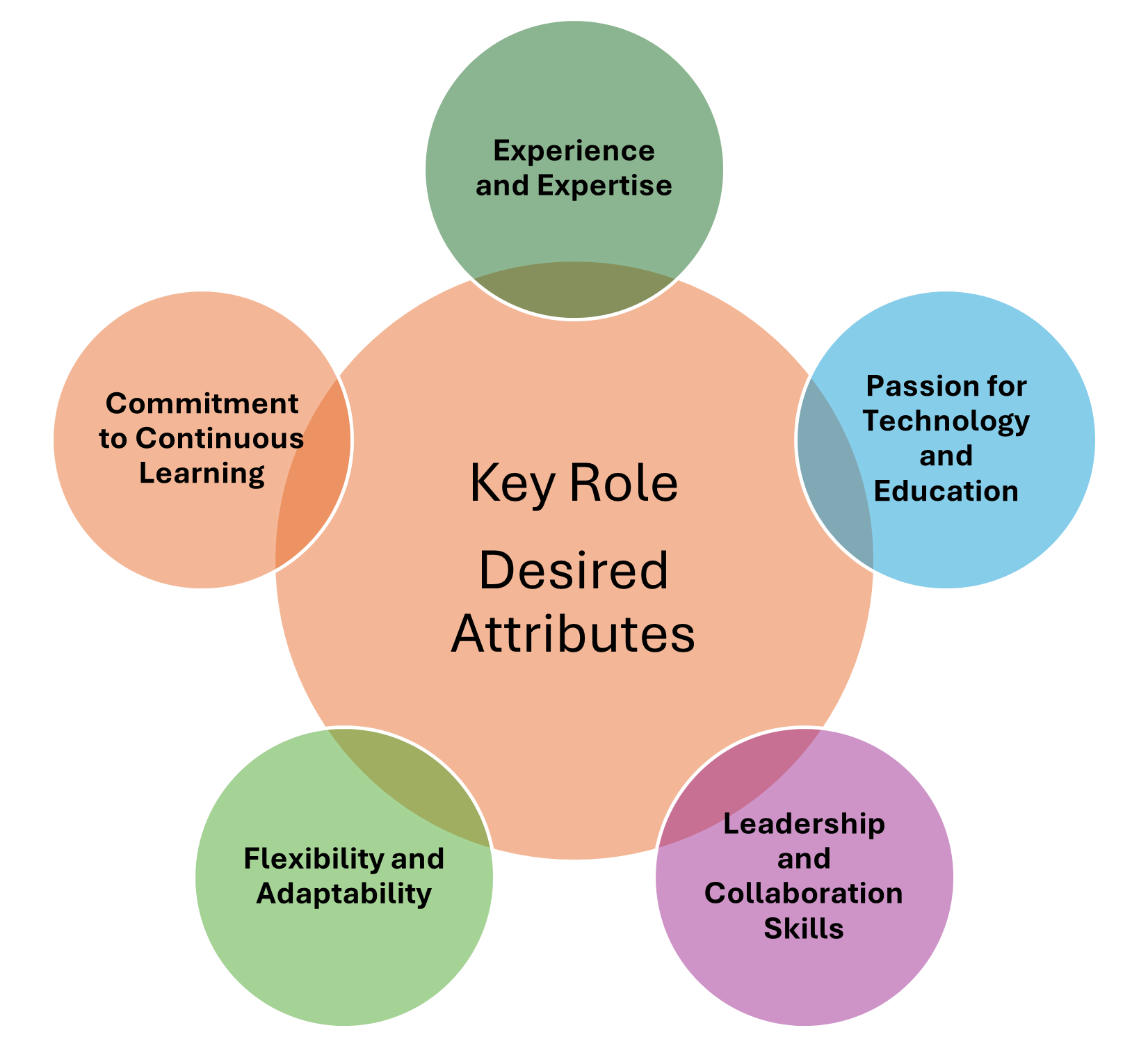Chapter 2: Assigning the Right People

Implementing a digital strategy in schools is a multilayered and complex process that demands careful planning, thoughtful execution, and a long-term commitment to adaptation and improvement. Success in this hinges on one of the most critical factors: ensuring the right people are in the right roles.
Without a strong, well-organised team, even the most well-conceived digital strategy is unlikely to reach its full potential. This chapter delves into the importance of identifying and assigning key individuals to lead the digital transformation and highlights that the strength of the team drives the overall success of the initiative.
We will explore how essential it is to define specific roles within the strategy, offering guidance on what each role entails and how to select the most suitable candidates. Building this strong team is not simply about filling positions on an organisational chart; it’s about cultivating a group of individuals who are aligned in their vision, passionate about innovation, and committed to the successful implementation of the digital strategy. Effective teamwork requires more than just technical skills, it also depends on collaboration, communication, and a shared commitment to the school’s educational goals.
While each role has its own distinct responsibilities, it is important to recognise that in many cases, one person may be able to take on multiple roles, especially in schools with limited resources. It is important to make sure that the workload is balanced and that no individual is overwhelmed. Understanding the differences between the roles is vital to creating a cohesive, efficient team. By clearly distinguishing the functions of each role while also allowing flexibility, schools can create a dynamic team capable of adapting to the evolving needs of the digital strategy. Ultimately, this chapter will offer a comprehensive guide to building and empowering a team that is well-equipped to lead a school’s digital transformation.
Identifying Key Roles

Digital Strategy Leader
This individual will serve as the driving force behind the digital strategy. The digital strategy leader should have a deep understanding of educational technology, experience in implementing digital initiatives, and strong leadership skills. This role is crucial for aligning the digital strategy with the school’s vision and ensuring that all stakeholders are on board.
Technology Support Staff
This team will provide technical support and maintenance for the digital tools and resources used in the school. Their expertise will ensure that teachers and students have reliable access to technology and can troubleshoot any issues that arise. These should be members of your academic staff rather than operational staff and will be fully supportive of the digital strategy.
Teacher Champions
These are educators who are passionate about technology and willing to explore new teaching methods. Teacher champions play a vital role in modelling effective use of technology in the classroom, mentoring their peers, and providing feedback to the digital strategy leader on what works and what doesn’t.
Curriculum Specialists
Curriculum specialists will help integrate digital tools into the existing schemes of work. They should be able to collaborate with teachers to develop lessons that leverage technology effectively while meeting educational standards.
Professional Development Coordinators
This role involves designing and facilitating training programs for staff. Professional development coordinators ensure that teachers receive ongoing support and training to build their digital literacy and confidence.
Data Analysts
In a data-driven approach, analysts play a crucial role in evaluating the effectiveness of the digital strategy. They collect, analyse, and interpret data related to student performance, technology usage, and overall program effectiveness, providing valuable insights for continuous improvement.
Selecting the Right Individuals

Choosing the right individuals for these roles is crucial for the success of the digital strategy. Here are some criteria to consider when selecting candidates:
Experience and Expertise
Look for individuals with relevant experience in education, technology integration, or specific areas related to the digital strategy. Their backgrounds will provide valuable insights and skills to the team.
Passion for Technology and Education
Candidates who are genuinely passionate about both technology and education will be more motivated to drive change and inspire others. Look for individuals who actively seek out new learning opportunities and stay updated on educational trends.
Leadership and Collaboration Skills
The ability to lead and collaborate is essential in a team environment. Candidates should demonstrate strong interpersonal skills, including the ability to communicate effectively, listen actively, and build relationships with colleagues.
Flexibility and Adaptability
Digital strategies often require adjustments and changes along the way. Look for individuals who are open to feedback, willing to adapt to new ideas, and comfortable navigating uncertainty.
Commitment to Continuous Learning
Technology and education are constantly evolving fields. Select candidates who are committed to their professional development and willing to engage in ongoing learning to improve their skills.
Building a Team
Once the key roles are identified and individuals selected, the next step is to build an aligned team that works effectively together. To foster collaboration and teamwork, it's important to establish clear goals, ensuring that everyone has a shared understanding of the digital strategy’s objectives and purpose. Encouraging open communication is key; creating an environment where team members feel comfortable sharing ideas, asking questions, and providing feedback through regular meetings makes this happen. Promoting collaboration by encouraging team members to work together, share resources, and learn from each other’s experiences can lead to innovative solutions and a stronger sense of community. Celebrating successes, both big and small, helps to boost morale and motivates the team to continue their efforts. Providing professional development opportunities through training and development programs can strengthen the team’s skills and knowledge, enhancing their ability to effectively implement the digital strategy.
Assigning the right people to lead and implement a digital strategy is vital for success. By identifying key roles, selecting individuals based on specific criteria, and fostering collaboration within the team, schools can create a strong foundation for digital transformation. As the journey continues, having committed and skilled individuals in place will help ensure that the digital strategy aligns with the school’s vision and meets the needs of all stakeholders.
In the next chapter, we will explore how to assess the current landscape of technology and resources within the school, setting the stage for developing a robust digital strategy.
Book
Buy the Empowering
Education Digital Strategy
Book
In Empowering Education: A Comprehensive Guide to Implementing Digital Strategies in Schools, discover how to navigate the ever-evolving world of technology to enhance learning, streamline operations, and prepare students for the future. This book provides step-by-step guidance for creating a tailored digital strategy, from assessing your school's needs and building a collaborative vision, to rolling out initiatives and ensuring ongoing success. With practical insights, case studies, and expert advice, this guide equips educators, administrators, and IT leaders to lead their schools into a digitally empowered future. Perfect for those ready to make a lasting impact through innovative technology integration.


